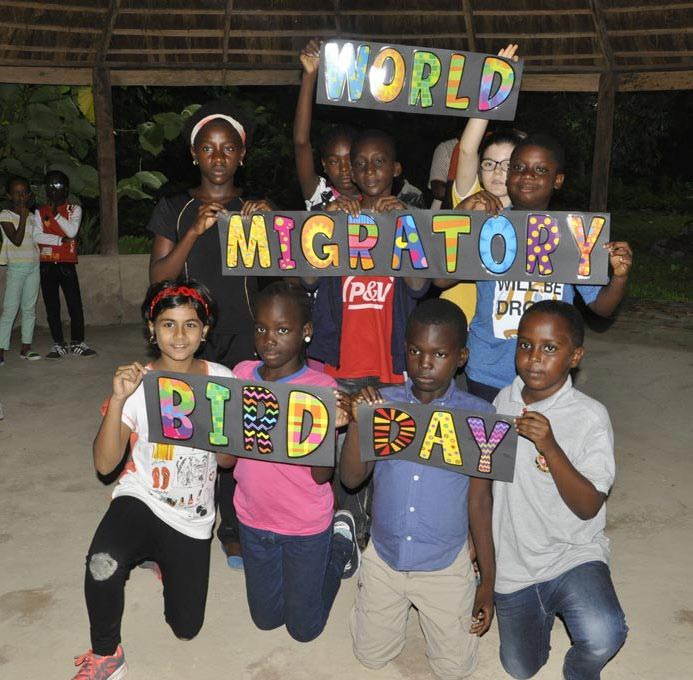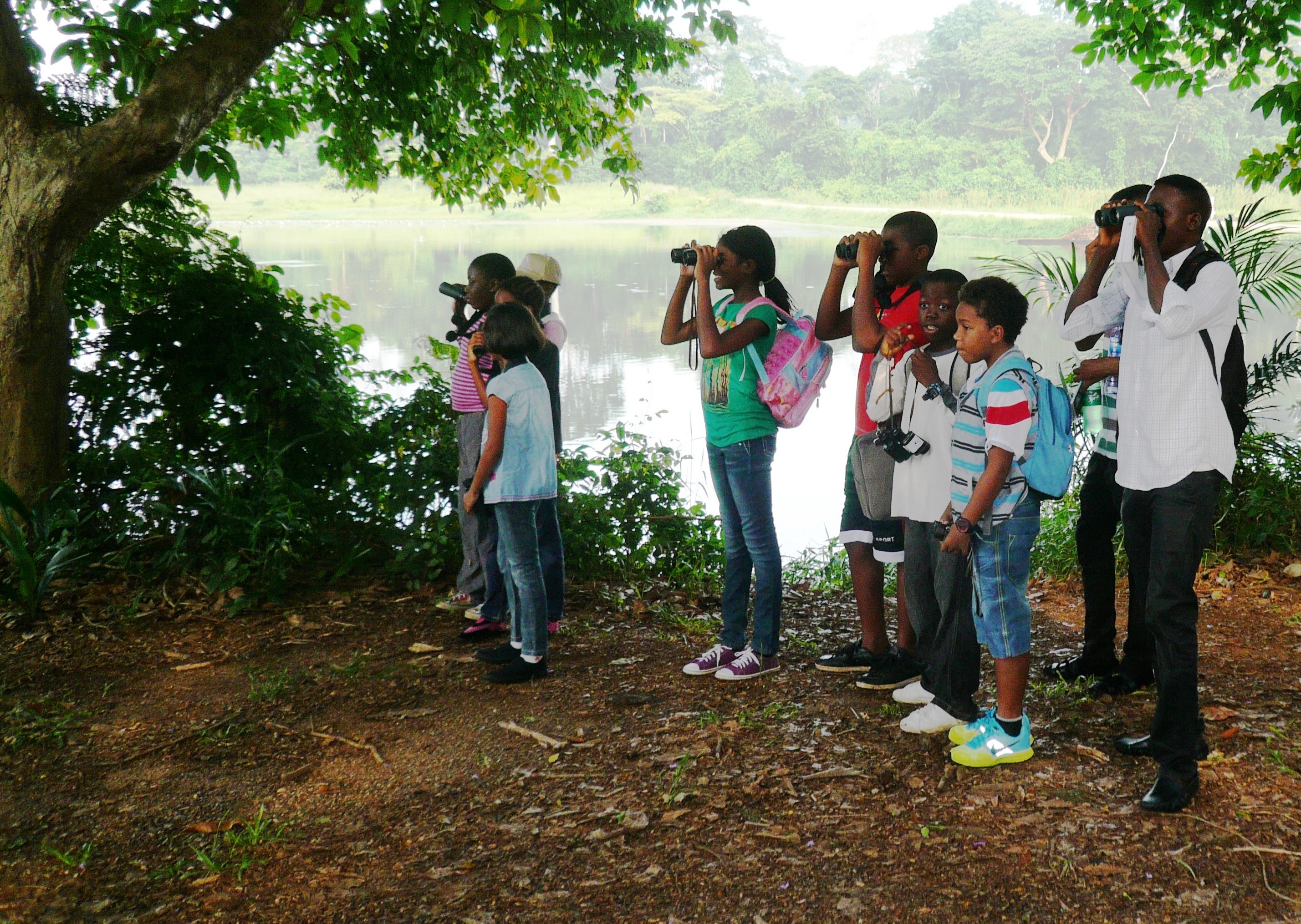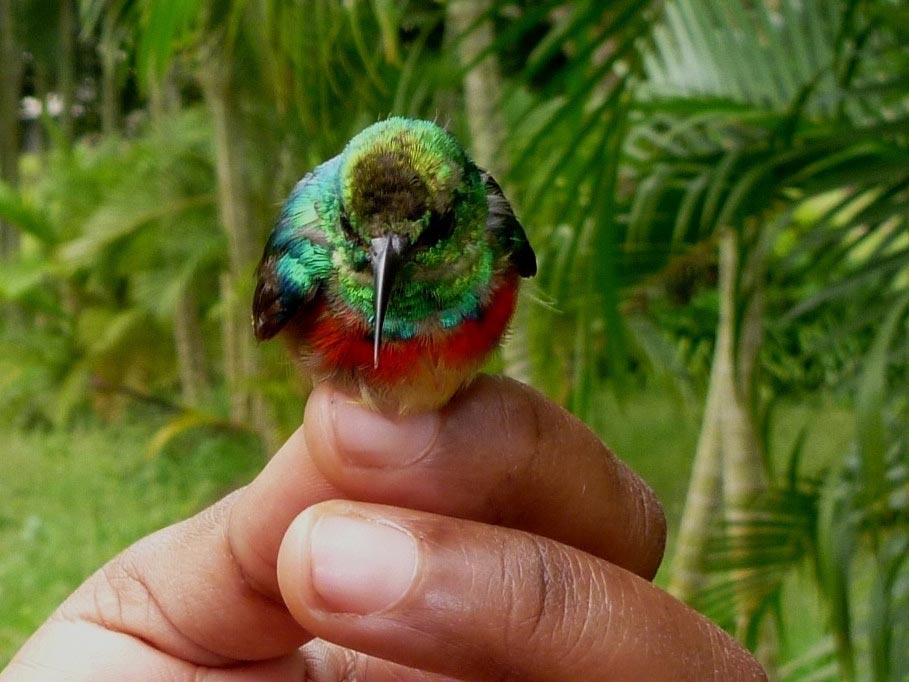Ever since IITA developed its headquarters in Ibadan in 1967 there have been staff and visitors with an interest in bird watching. Over time they compiled a checklist and eventually the Forest Reserve and environs were recognised by BirdLife International as an Important Bird Area (IBA). This global designation is based on observations of ‘trigger species’ – birds that have a restricted range, or are in serious decline and of conservation concern. Thanks to varied habitats within the campus – forest, lakes and wetlands, gardens and farmland – over 270 different bird species have been recorded.
The main aim of the 3-year Ornithological Monitoring Project (2015-2017), funded by the Leventis Foundation, is to monitor the IBA more effectively by carrying out scientific surveys. These focused observations are carried out four times a year in five transects and two Constant Effort Sites (CES) as shown in the map below. Mist-nets are set up along forest trails to catch birds without harming them. This allows ornithologists to examine the birds, take biometrics, and either ring birds that have not been caught before or record ‘re-traps’.







